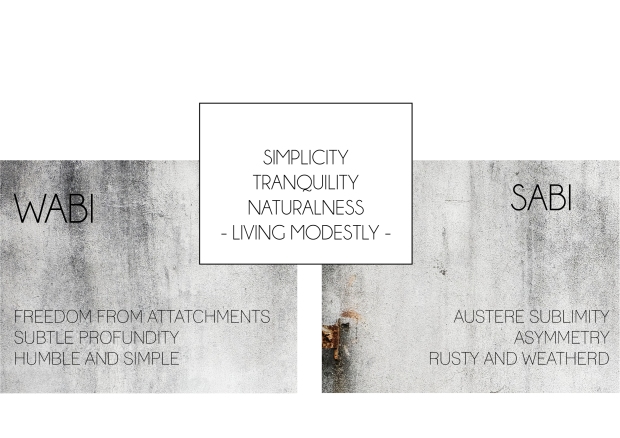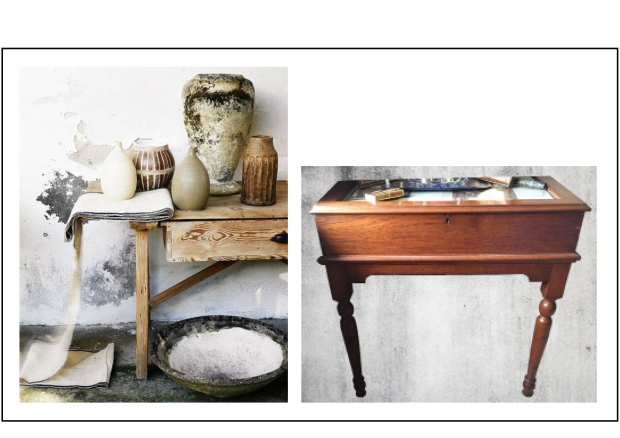Attention!!! We are flagging off collaborations with some of the master’s from the reel and the real world where they share observations, experiences and learnings from encounters old, new and trendy. We are super excited to introduce our very first chapter by Production Designer Sharmishta Roy (she promises to write many many more!)
.
Chapter 1 | Wabi Sabi
I first heard the term ‘Wabi Sabi’ not so long ago, when I attended Interior Design classes in the US.
I was intrigued! My work as a Production Designer for mainstream Bollywood films had largely revolved around creating pristine, glamorous and luxurious environment inspired by western lifestyles. Now, sitting in a classroom in California, I was being educated about an ideology prevalent amongst people on the other side of the globe. The Japanese word ‘Wabi Sabi’ implying – ‘Beauty found in simplicity’, ‘imperfections’ and ‘being true’.
Wabi Sabi is not a decorating style…it is a philosophy. It aligns with the Western philosophy of ‘Less is More’.
It advocates doing away with the superfluous, being austere. In addition, it is about being aesthetically sound and having a deep appreciation for the conditioning brought about by the passage of time.

Just a bunch of words you say! Let me help you understand Wabi Sabi better.
Maybe you own a handmade earthen vase, plate or mug. You will notice its undulating edges, uneven coloring, flecks etc. All part of the Wabi Sabi of that piece!
I have inherited from my father a beautiful, much-used wooden table of English ancestry. I intend to use it as a desk, just as my father did! The various blemishes on its surface induce a sense of warmth and nostalgia. In turn, I hope to leave my imprint on it! Also, when paired with other furniture along modern lines, it will create an interesting contrast. More Wabi Sabi!

On the right, the inherited wooden table. And to the left an image showing various earthen vases decorated on a table, sourced from enversdudecor.tumblr.com
–
So, does Wabi Sabi advocate filling up our homes with faded, chipped, rusted miscellaneous objects? Negative! It simply means you cherish the imprints of the past and want it to accent the present.
And does it mean that an unkempt house can pass off as Wabi Sabi aesthetic? On the contrary! An important part of this aesthetic is the respect for tidiness and hygiene.

Mood Board Appreciation

Villa Branco | Architecture & Interior Design by Momo-Studios influenced by Wabi Sabi
–
The Wabi Sabi aesthetic can be infused into any decor – use it when employing the austere, industrial lines of Modern or Minimalistic styles.
Or then express your appreciation for the “truth in materials” a la Arts and Crafts style.
Or yet again, let it guide you in the selection of organic materials and textures typical of Rustic style interiors.

Villa Branco | A luxurious villa – modestly decorated, located in Anjuna, Goa.

The villa is designed on the principles of wabi-sabi with the use of natural materials and finishes and locally made paints and polishes.

Since Wabi Sabi is the appreciation of all things natural, an earthy palette is in keeping with this aesthetic – warm browns, creams, whites, ochers, and greens. Patinas, crackles, and yellowed pictures strengthen the sense of rootedness. On an ecological note, Wabi Sabi works at creating sustainable interiors by reusing the old and the loved.
Go Wabi Sabi!

Pictures showing the wabi-sabi textures beautifully.
#DID YOU KNOW Wabi-sabi enthusiasts (called “wabibitos”) are described as being “a person who could make something complete out of eight parts when most of us would use ten.”
The Images for this post are contributed by Studio Momo.
Which is a wabi-sabi inspired Architectural and Interior Design firm based out of Goa.
Their conscientious designs are a result of a shared passion for creating eco-friendly interior-architectural finishes through an environmentally sensitive practice.
Which we think is so admirable!! Do take a look at their other wonderful projects here


The first three words describing WABI says FREEDOM FROM ATTACHMENT, then how do we exercise it by using inherited or rather used artifacts, where, it clearly indicates a sense of attachment to the object. Is there something I fail to understand?
LikeLike
Fabulous!
On Sun, Jul 10, 2016 at 6:37 PM, Many Many Things wrote:
> sharroy posted: ” Attention!!! We are flagging off collaborations with > some of the master’s from the reel and the real world where they share > observations, experiences and learnings from encounters old, new and > trendy. We are super excited to introduce our very fir” >
LikeLike
Lovely! 😀
LikeLike